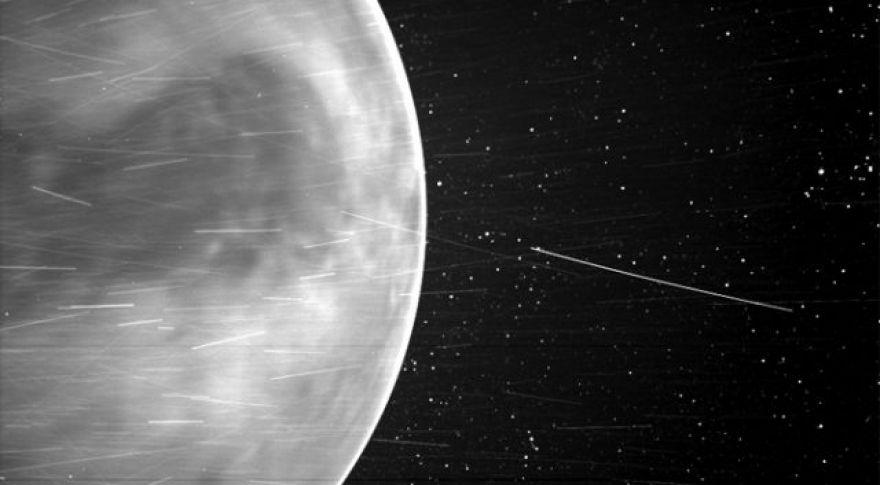
NASA’s Super-Fast Solar Probe Returns Amazing Image of Venus
NASA launched the Parker Solar Probe in 2018, but the spacecraft from its most recent flyby. According to NASA, Parker spotted a previously unseen glow that could be a product of oxygen in the inhospitable planet’s atmosphere. The unexpected clarity of surface features also has scientists reassessing how sensitive Parker’s cameras are.
Parker is designed to study the sun, but it also spends a lot of time near Venus. To analyze the sun’s corona without getting fried, Parker moves at incredible speeds. It’s currently the fastest human-made object, moving at almost 300,000 miles per hour (466,000 kph) relative to the sun.
It was during one of these close passes in July 2020 that NASA turned the vessel’s WISPR wide-angle camera toward the planet — the image you see above is what they got back. The camera shows a bright glow along the edge of the planet, which may be “night glow.” This comes from oxygen atoms emitting a few photons of light when they recombine into molecules on the planet’s dark side. Astronomers probably .
Perhaps more interestingly, the image shows surface features of Venus. As you may know, Venus has a thick, choking atmosphere of carbon dioxide and sulfuric acid. Most instruments can’t see the surface at all, but Parker’s snapshot shows the dark outline of Aphrodite Terra, the largest highland region on the planet.
NASA says this could have two notable impacts on future observations. First, Parker’s WISPR camera could be more sensitive to infrared wavelengths of light than the team realized — they’re currently running laboratory tests to see how deep into the infrared Parker can see. It’s possible this could open new methods of studying dust around the sun. It also suggests there may be a wavelength of infrared light that acts as a “window” through Venus’ atmosphere. The team is looking into that as well.
And what of all the streaks in the image? Scientists are still discussing that. The current thinking is this is the result of charged particles bouncing off dust. The number of streaks varies depending on where Parker is in its orbit, but this is a lot of streaking. We might have some answers soon. Parker just completed another flyby of Venus on February 20th. The team hopes to process and release that data in April.
Now read: